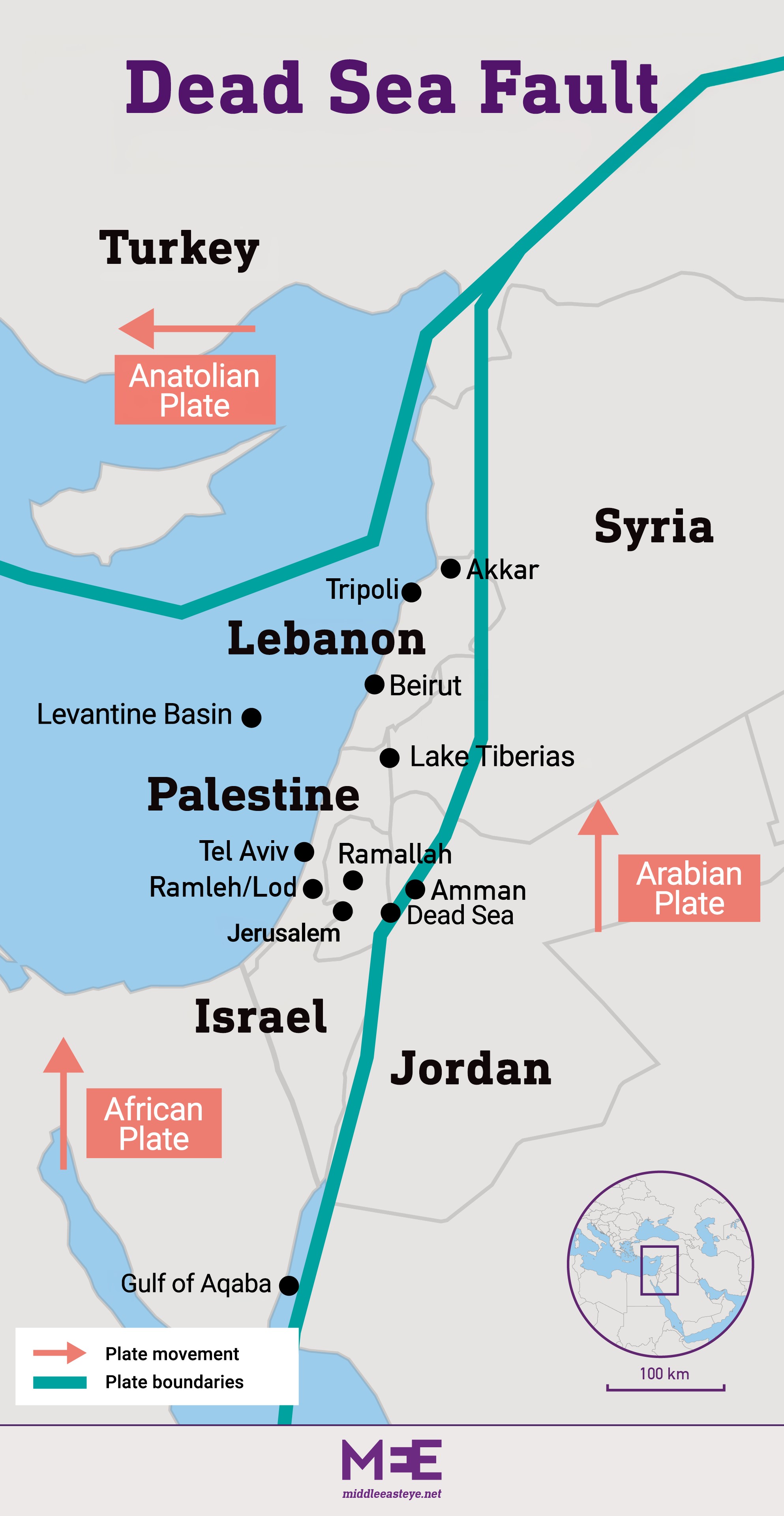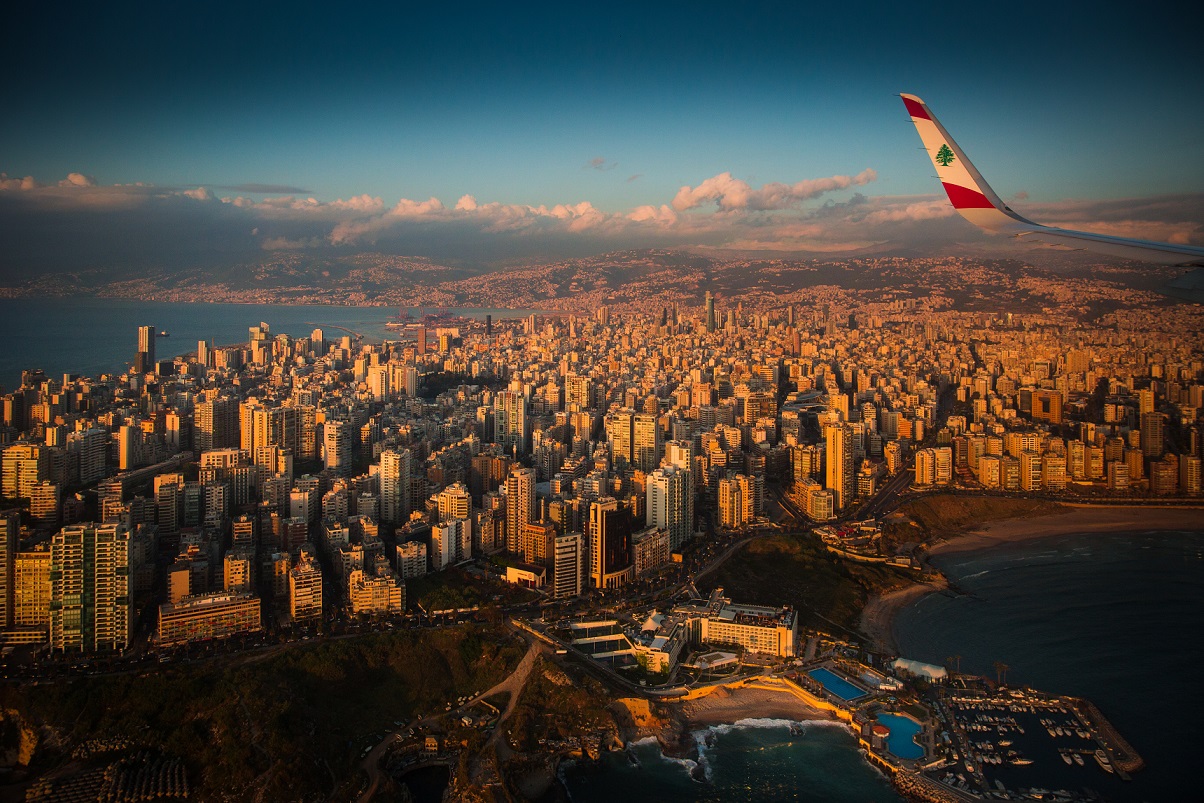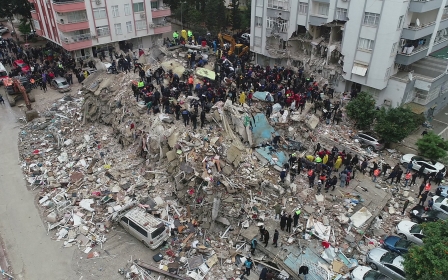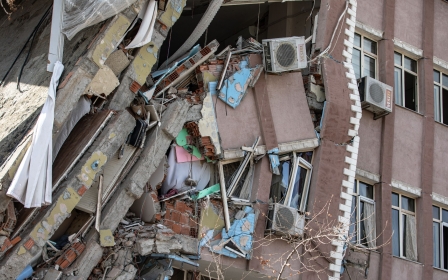Lebanon, Palestine, Israel: Is the Middle East doomed to a major earthquake?

From Beirut to Amman passing by Ramallah or Tel Aviv, a collective fear resurfaces with each new earthquake. Natural laws ignore geopolitical issues, borders and conflicts: in the Middle East, millions of people live along the Dead Sea Fault, a major seismic hazard zone.
Rooted in the eastern Mediterranean Basin, the rift is located at the junction of the African and Arabian plates, perforating the region from south to north over 1,200 kilometres, from the Gulf of Aqaba to Turkey, via Palestine, Israel, Jordan, Lebanon and Syria.
And if in recent decades, several low-intensity earthquakes have shaken the region, including as recently as last July, the shock wave of the quake that plunged Turkey and Syria into mourning on 6 February 2023 awakened old demons, buried in the collective unconscious, but not forgotten.
Since then, haunting questions have been going round and round: is the Middle East doomed to experience a huge disaster one day? Is the region prepared?
While, on a daily basis, seismic threats are far from being the region’s priority concerns, the accumulation of reminders in recent years has left its mark.
New MEE newsletter: Jerusalem Dispatch
Sign up to get the latest insights and analysis on Israel-Palestine, alongside Turkey Unpacked and other MEE newsletters
There were scenes of panic in several cities in Lebanon on 6 February 2023, as the country experienced strong tremors following the earthquake in neighbouring Turkey and Syria.
Convinced that a tragedy was unfolding, thousands of Lebanese rushed outside their homes. Their fear is that the question is no longer if there will be a major earthquake in the region, but when. And it's a fear shared by many experts.
'The past is the key to the present and the future. It shows us the high frequency of earthquakes in the region and their destructive nature'
- Shmuel Marco, Tel Aviv University
Shmuel Marco, a professor of geophysics at Tel Aviv University, believes that a major catastrophe is inevitable.
"The past is the key to the present and the future. It shows us the high frequency of earthquakes in the region and their destructive nature," he told Middle East Eye.
Indeed, the movement of tectonic plates - particularly the Arabian Plate, which is slowly but surely moving towards the Anatolian Plate to the north - is ineluctable.
Jalal Dabbeek, director of the Earth Sciences and Earthquake Engineering Centre at an-Najah University in Nablus, in the occupied West Bank, agrees.
"The geographical exposure of Palestine, like that of Israel and Jordan, ranges from moderate to very significant. We are expecting a magnitude six to seven earthquake, with some areas in the north possibly exceeding that figure," he told MEE.
Which areas would be affected?
While it seems that in the event of a severe earthquake, Jordan would be the least affected country, there is great concern elsewhere, particularly in Lebanon.
"Acceleration, which is the seismic calculation value, is the same throughout Lebanon, because the country is so small. This indicates the extent to which the entire territory would be affected," Yehya Temsah, a professor of civil engineering specialising in the study of structures under the action of earthquakes at Beirut Arab University, told MEE.
"We should also not forget that in addition to the Yammouneh Fault [the name given to the Dead Sea Rift in Lebanon], there are several other secondary faults, more or less important, which could move at any time," he continued.
Further south, Professor Marco has identified several weak points: between the Dead Sea (situated between Israel, Jordan and Palestine) and Lake Tiberias (in Israel), as well as near the Gulf of Aqaba (opening onto the Red Sea, between Israel and Jordan).
"One approach is to look for sensitive locations that have not known earthquakes for a long time, and where pressure is accumulating," he told MEE.
"In the first case, the last major earthquake happened in 1033, which is a thousand years of slow pressure build-up. Near the Dead Sea, the last one was in 1212, with a smaller one in the 15th century," he explained.
"We can learn from the earthquake in Turkey. The place where the earthquake occurred had not moved since 1157, on what is called the East Anatolian Fault. So while we cannot know the exact moment of the rupture, it is nevertheless possible to determine the locations," he added.
'The Palestinian capacity to deal with such an event is very weak. Mainly because we are under occupation'
- Jalal Dabbeek, An-Najah University in Nablus
Given that the previous major earthquakes in Turkey and the Middle East each occurred a thousand years ago, does the recent rupture on the East Anatolian Plate bode ill for Lebanon, Israel and Palestine?
Specialists are unanimous: it is an indication, but there is no scientific evidence to support it.
"Perhaps with the earthquake in Turkey, we will see a reconfiguration of the regional landscape, but it is still far too early to know," Marco said.
In the event of an earthquake north or south of the Dead Sea, should we expect to see cities like Jerusalem or Ramallah wiped off the map sooner or later?
"The local geology is also important," the professor replied.
"Houses built on rock are less affected than those built on land. Both Ramallah and Jerusalem are built on mountains, which should make them relatively safe," he explained.
"On the other hand, cities like Ramla, and Lod [in Israel] could be very badly hit," Marco pointed out.
Lack of preparedness
Dabbeek is adamant that an earthquake of this magnitude would be extremely deadly in the West Bank.
"The Palestinian capacity to deal with such an event is very weak. Mainly because we are under occupation," the expert told MEE.
"We lack infrastructure, we have no airport. International assistance could take three to four days to arrive on site, as the Jordanians and Israelis would probably be so overwhelmed with their own situation."
Dabbeek also highlights that "the institutions and non-governmental organisations lack knowledge in this area".
"All the more so that the task would be very difficult with the many refugee camps. We do not only suffer from physical vulnerability, but also from a social, economic and environmental one."
'So many buildings [in Lebanon] are already weak… This is very worrying'
- Yehya Temsah, Beirut Arab University
This scenario contrasts with the latest Israeli advances in the matter: in February 2022, the country officially launched a national earthquake warning system.
Although not "predictive," it should be able to warn people living relatively far from the epicentre, and save them a few precious seconds.
"This is enough to stop a train so that it does not derail, to put dangerous substances in safe places, to shut down gas lines and high-voltage electricity to prevent a tragedy," Marco explained.
However, in his opinion, this asset does not make Israel a country ready to face a major earthquake, because it has "good training in rescue but not so much in preparedness".
"The anti-earthquake building codes were only imposed in 1995, and many old houses may not be able to resist," he said.
"We have not educated the population enough about the proper behaviour to adopt; the authorities are certainly afraid of scaring people," Marco added.
In Lebanon, the risk of earthquake damage is significantly increased by overcrowding, building on poor quality soils, as well as the widespread practice of adding floors to buildings without taking appropriate precautions.
"We have many vulnerable people, especially in some neighbourhoods of Beirut, in the Tripoli region, and Akkar [north of the country], who already have buildings damaged by time and humidity," Temsah told MEE.
"The anti-seismic standards that were imposed by the state in 2013 have not been applied everywhere, because of the costs they incur," the professor noted.
In the current context of a failed state, Lebanon is ill-prepared for a major disaster scenario.
"So many buildings are already weak. Buildings constructed after 2013 represent around 15 to 20 percent of the built environment. It is likely that all the rest will not be able to withstand a severe earthquake. This is very worrying," Temsah said.
Translated from MEE French edition (original) and updated.
Middle East Eye delivers independent and unrivalled coverage and analysis of the Middle East, North Africa and beyond. To learn more about republishing this content and the associated fees, please fill out this form. More about MEE can be found here.






